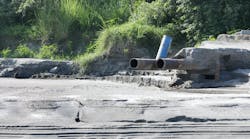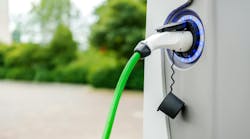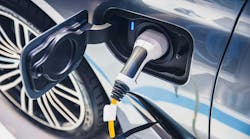Can the power grid of the future find answers to some of its supply problems by looking closer at traditional coal-fired power generation? The U.S. Department of Energy evidently thinks so, as it is ponying up some $17 million for three projects intended to produce critical resources from coal power byproducts.
According to a DOE press release, these projects, funded by the infrastructure law, could help meet the growing demand for cobalt, manganese, vanadium, lithium, nickel and others by recovering them from some unorthodox places, such as coal fly ash, which many coal-fired power plants have just sitting around in massive lagoons full of black slurry.
Coal combustion byproducts include fly ash, bottom ash and flue-gas desulfurization materials, which is produced by chemical scrubbers that clean up coal power plant pollution. Coal ash contains cobalt, manganese and vanadium, which are used in the manufacture of some types of batteries.
Coal mining refuse, which are the byproduct of acid mining, are a significant environmental hazard, but also a potential source of manganese, aluminum and iron.
The DOE picked these projects to be front-end engineering and design (FEED) studies for extracting useful metals from coal byproducts:
- The Board of Trustees of the University of Illinois at Urbana-Champaign (Champaign) will perform a FEED study needed to establish a fully integrated, vertical supply chain that would be located entirely within the State of Illinois for production of select critical minerals from coal-based sources.
- Winner Water Services, Inc. (Sharon, Pennsylvania) will build on prior technology development to complete a FEED study located in Georgia on recovering rare earths from coal ash while preparing the coal ash for the concrete market.
- Tetra Tech, Inc. (Houston) will build on prior technology development to complete a FEED study located in Pennsylvania on recovering rare earths and potentially other critical minerals from coal byproducts while processing the clays to a salable grade.
More details about the selected projects can be found here.
Last year, a group of senators encouraged the DOE to research new battery electrochemistries other than lithium ion, the type of battery that currently dominates the market for large batteries.
According to the International Energy Agency, lithium iron phosphate batteries are the industry preferred choice for utility-scale energy storage and constitute the majority of new installations. Other available technologies include nickel cobalt aluminum and nickel manganese cobalt, as well as vanadium redox flow batteries.
In December 2022, the DOE’s Loan Programs Office finalized a $102.1 million direct loan to Louisiana-based Syrah Technologies LLC for the expansion of a processing facility for a critical material used in lithium-ion batteries for electric vehicles and other clean energy technologies.
The DOE also made a $2.5 billion loan to Ultium Cells LLC, a joint venture of LG Energy Solutions and General Motors, to help finance the construction of new lithium-ion battery cell manufacturing facilities in Ohio, Tennessee and Michigan to support the domestic EV industry, according to the DOE.


